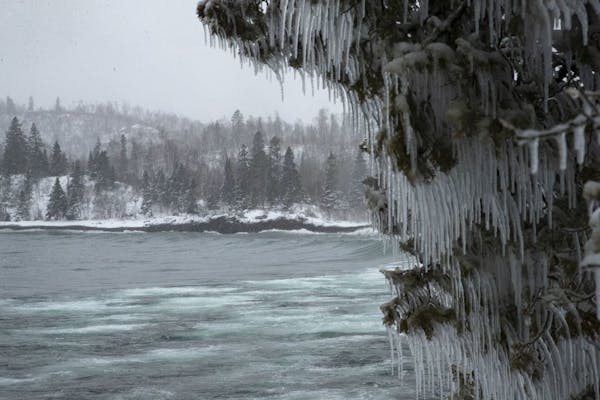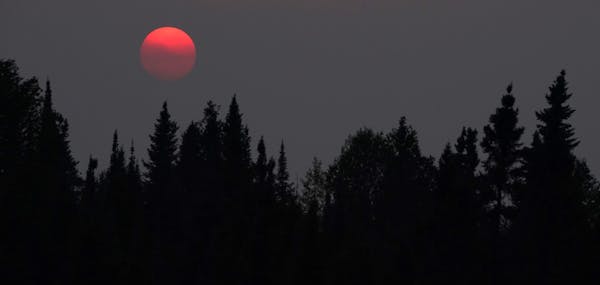DULUTH – With most of Minnesota in a state of drought, the rushing waters of many of the region's inland tributaries and rivers have slowed to a trickle, including the western side of the North Shore's Gooseberry Falls. Its lower falls have run dry, offering a rare view of the famous waterway.
While it's not unusual for that side to dry up, it's usually later in the summer, said Nick Hoffmann, assistant park manager for Gooseberry Falls State Park.
Gooseberry River, which drains from the Gooseberry watershed, is flowing but at a lower rate.
"If this dry weather continues, there is a possibility the falls could dry up in late August," Hoffmann said, which hasn't happened in about 15 years.
Along with lack of rain, exhausting stores of water in soils and wetlands contribute to low water levels in rivers, said Diana Karwan, a hydrologist and associate professor at the University of Minnesota.
Those stores of water created from rain and snow — base flow — keep rivers running without rain, and they are depleting, she said.
"What you are seeing at Gooseberry Falls now is resulting from what's happening this week and this month, but also over the course of the entire year, where it's been so dry," Karwan said.
"The question on my mind is will the drought years become more common and get to a point where it's the new normal."
Minnesota Sea Grant director John Downing says that's likely to happen.
"There's no doubt this will become more common" and affect water quality, he said, with ice-free seasons for inland lakes increasing by two to four weeks over past years, and smaller ice cover of Lake Superior. Rivers along the North Shore, from the Knife to the Temperance, are low this summer, some even with dry sections save for occasional pools.
The potential for more wildfires is also a concern, Downing said, because along with forest destruction, wood ash affects water quality. The nutrients and heavy metals found in trees, once burned, can harm all that lives in water, he said.
Low river levels and warm water also hurt migratory fish populations, especially for the coho and chinook salmon and brook and rainbow trout that use streams that feed into Lake Superior as nursery areas. The young fish run out of room and the heat can literally cook them, said Don Schreiner, a fisheries specialist for Minnesota Sea Grant. In warming inland lakes, too, cold-water fish like lake trout and cisco have less room to live.
And if Lake Superior wave action creates piles of sand and rock at low-flow river mouths, young fish can't make it to the lake and adult fish can't enter the stream to spawn.
The drought could also lead to sections of rivers freezing to the bottom with no room for fish to survive the winter, Schreiner said.
"The concern would be range reduction, and it would be a shame to see that happen," he said.
Low river levels, especially on the North Shore, could also hurt tourism.
"Not that many want to drive up the shore to see a dry cliff," Downing said. "We are known around the world for abundant, flowing, beautiful, clear water. If you draw down the groundwater, it takes a long time to build it back up."
While Gooseberry's Hoffmann expects winter's snowpack to restore river levels, he's noticed trees are already changing color, a sign of distress. The low water isn't affecting the number of park visitors, which annually reaches 800,000, but park regulars are commenting on it, Hoffmann said.
"They're asking if this is normal," he said.

Shop the curbs for free on 'Trash to Treasure Day' in White Bear Lake
Longtime Uptown boutique closing in May

Meet the Athena Award winners: 103 female athletes honored by their schools

Lacrosse lists: 21 top players and the school that's No. 1 for boys and girls


